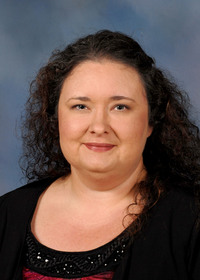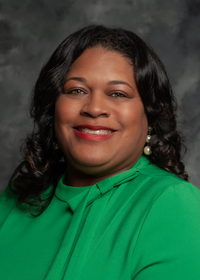Protect Children from Sexual Abuse: Tips for Parents of Preschoolers
Having “The Talk”
Most people wait to have “the talk” about the “birds and the bees” with their children when they are in their teens. But it is best to start talking about these sensitive topics when your children are young and continue the conversation throughout their growth. A continued conversation helps children know they have a safe source of information, which can protect them from abuse.
Starting Early: 1–4 Years Old
You might feel awkward at first, but the earlier and more often you have these conversations, the easier they will be for both you and your child. Having conversations with your young child about their private body parts can help protect them from sexual abuse. Learning from you, they will know that they have someone they can go to with questions or worries.
Starting this conversation when they are young is good! It will build trust between you and your child.
Your child will feel more comfortable and will be more willing to come to you when they are older. This will also help build a foundation for talking later about complex issues like consent.
What Should I Teach?
Teach them the names of their body parts
A young child is excited when they find new parts of their body. Remember when they finally found their toes? Or when they found their belly button? Your children will also find their private body parts.
If you don’t allow your child to talk about their body parts, they may feel “dirty” or shameful. Talking with your child about their bodies as they discover parts of themselves helps them understand appropriate boundaries and their own natural development.
When your children know the actual names of their body parts, they are more protected from sexual abuse. They are better able to understand and communicate about inappropriate touch.
They need to know the real names of their body parts. When you call body parts by nicknames, your children may learn to feel uncomfortable talking to you about their bodies or may not get the skills they need to communicate about their body parts.
The words “penis” and “vagina” are simply words. If you are worried your toddler will go running around shouting about their body parts, help them learn the boundaries around when to talk about bodies, just like children learn boundaries around when to talk about bathroom behaviors and other delicate topics. Be careful not to make them feel shame about their bodies. Talking about bodies is a normal part of children’s development.
Teach them about good touch and bad touch
Good touch can be tickles and hugs, or it can be when you help clean a scratch on their knee. Bad touch is any touch that makes them upset, but especially any touch on their private body parts.
Teach them where the body parts are on boys and girls. A good rule of thumb that young children can understand is that private body parts are ones that are covered up by a swimsuit. They should know that they cannot be touched there, or touch anyone else there.
Teach them about privacy and respect
They need to know that their body is theirs. They should be able to say “no” when someone asks for a kiss or hug. Teach them to ask before giving someone else a kiss, too.
You can say: “Your body belongs to you. You get to choose if you want to sit on someone’s lap and hug or kiss them. If you don’t want to, it is okay for you to say ‘no.’” And: “If you would like a hug or kiss from someone else, you need to ask them first. If they say ‘no,’ then don’t hug or kiss them.”
Your child will need you to help enforce their boundaries with other adults. Never make your child kiss or hug someone, even if this leads to awkward interactions with other family members. Insist that family members and other adults ask for permission before hugging, kissing, or touching your child. For example, tell them: “We are teaching [child’s name] about consent. Ask them for a hug or kiss first. If they say ‘no,’ you could ask for another form of affection such as a high-five or fist bump.”
It is totally normal for your child to touch their private body parts as they find them. They touched their toes and belly button when they finally found them! Teach them they can touch these body parts only when they are at home, not when you’re outside or at a store.
How Do I Teach That?
When
Great moments to teach your child about their body parts are during bath time and toilet training, when changing their clothes, and when going swimming. All of these moments give you the chance to naturally talk about their body as they develop. They also may ask! When possible, let your child lead these conversations and tell you what questions they have.
Where
Make sure you are in a place your child feels comfortable. This could be in the bathroom, their bedroom, or even the playroom. Model appropriate boundaries by teaching children where it is and is not appropriate to have these conversations.
How
Try to use a calm voice. Children pick up on the tone of your voice and learn a lot from it. If you sound uncomfortable or frustrated, they may learn to feel bad about their body. It is also important to be appropriate with what you say. Remember, they are very young. You do not need to go into detail. A good rule of thumb is to only answer what they ask using basic language. It is also a good idea to give them an example or two.
Great Books for Your Child
Having these conversations can be uncomfortable and challenging. However, there are a lot of great books to help you talk to your child and teach them in ways they will understand. Reading these books together can help you both feel more comfortable, as well as guide your discussions.
Amazing You! Getting Smart about Your Body Parts by Gail Saltz
This book will help you explain the differences between boys and girls in a fun way.
My Body Belongs to Me, from My Head to My Toes by Pro Familia
This book will help you teach your children about good touch and bad touch.
Who Has What? All about Girls’ Bodies and Boys’ Bodies by Robie H. Harris
This is a great book to help you teach your children about the real names of their body parts in a comfortable way.
What’s In There? All about Before You Were Born by Robie H. Harris
This a wonderful book to help you talk to your child about babies and birth.
Resources
Matthews, D. (2017, March 6). Call children’s private body parts what they are. Psychology Today.
Sick Kids Staff. (2019, June 6). Sexuality: What children should learn and when. About Kids Health.
Visit tipps.extension.msstate.edu for additional parenting resources.
Publication 3647 (POD-06-25)
By Amanda Hayes, former TIPPS Student Intern; Izzy Pellegrine, MS, former TIPPS Project Manager; Alisha M. Hardman, PhD, CFLE, former Associate Professor and Extension Family Life Specialist; Lori Elmore-Staton, PhD, Professor, Human Sciences; and Audrey Reid, MS, former TIPPS Project Manager.
The Mississippi State University Extension Service is working to ensure all web content is accessible to all users. If you need assistance accessing any of our content, please email the webteam or call 662-325-2262.


